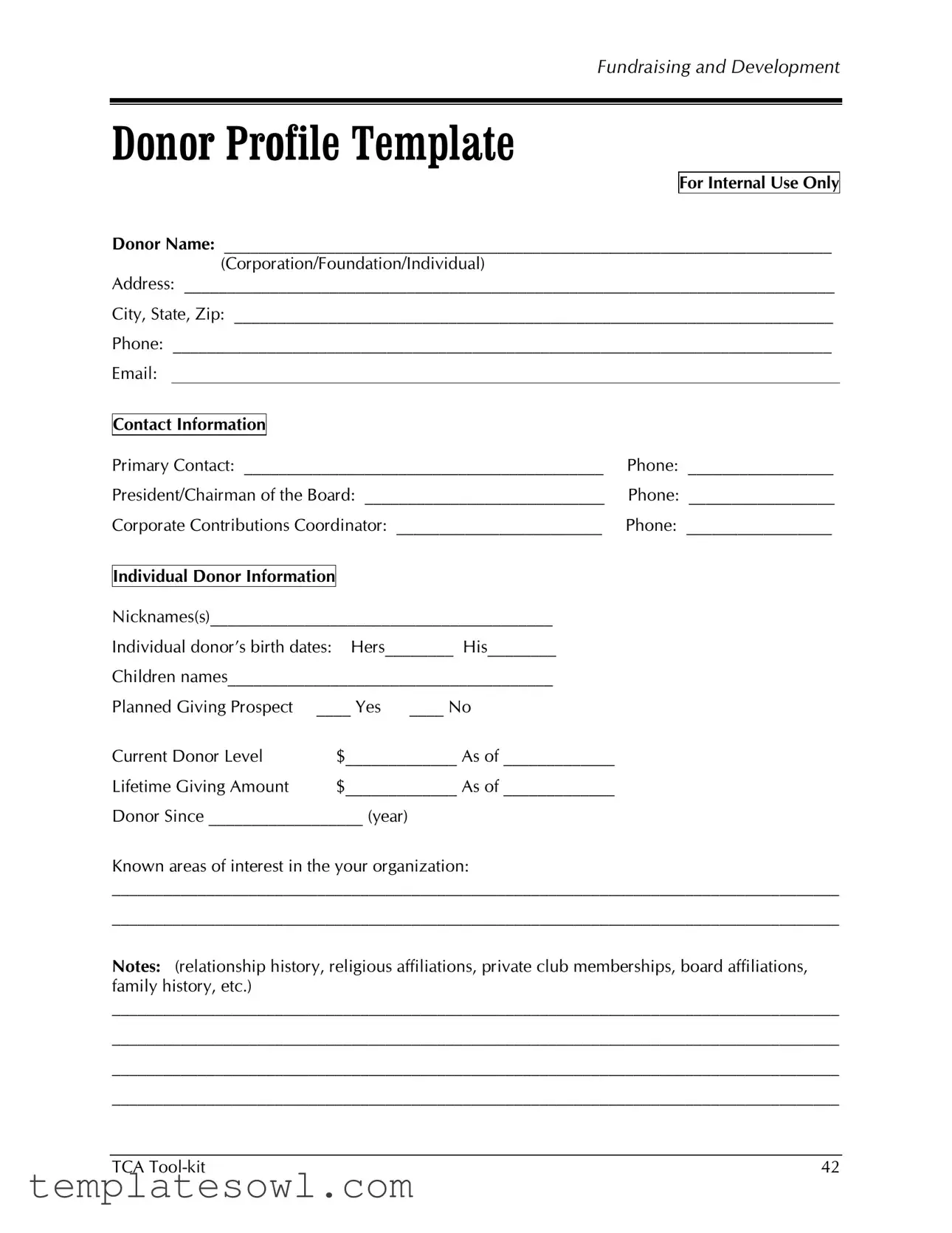What is the purpose of the Donor Profile form?
The Donor Profile form is designed to collect comprehensive information about donors, whether they are individuals, corporations, or foundations. This information helps organizations build and maintain strong relationships with their donors. By understanding donor interests, history, and contributions, organizations can tailor their fundraising strategies effectively.
What information is required on the Donor Profile form?
The form requires essential details such as the donor's name, contact information, and giving history. For individual donors, it also asks for personal information like birth dates, nicknames, and the names of children. Additionally, organizations will want to record known areas of interest and any relevant notes about relationships, affiliations, or history with the donor.
How does the Donor Profile form help in future fundraising efforts?
With the detailed profiles created using this form, organizations can track patterns in giving and identify potential for future contributions. Donor interests and affiliations can guide targeted fundraising campaigns. This focused approach often leads to more successful fundraising initiatives and stronger donor engagement.
Can the Donor Profile form be updated after initial submission?
Yes, it is important to keep the Donor Profile form updated. Changes in a donor’s interests, contributions, or contact information should be recorded to ensure that the organization has the most accurate and relevant data. Regular updates can enhance communication and deepen relationships.
Who has access to the Donor Profile form?
The Donor Profile form is for internal use only. Access is typically restricted to personnel involved in fundraising and development. This confidentiality protects donor information and helps maintain the trust between donors and the organization.
What is included in the "Notes" section of the form?
The "Notes" section is a valuable space for recording additional details that are important for understanding the donor better. This may include historical relationships with the organization, insights into their philanthropic goals, religious or community affiliations, and any memberships in private clubs or boards that may influence their giving.
How can a non-profit determine the appropriate donor level?
Determining the donor level involves analyzing past contributions, ongoing engagement with the organization, and current financial capacity. Organizations often categorize donor levels based on specific thresholds or criteria, ensuring that each donor feels recognized and valued according to their unique contributions.
What is the importance of planned giving prospects on the form?
Identifying planned giving prospects allows organizations to recognize donors who may be interested in making long-term commitments through bequests or other planned giving strategies. This indication helps organizations nurture relationships and provide tailored information on how such gifts can support their mission.
Are there any training resources available for using the Donor Profile form?
Many organizations offer training sessions or materials to help staff understand how to effectively use the Donor Profile form. These resources typically provide guidance on how to collect information accurately, maintain donor confidentiality, and leverage the data for effective fundraising strategies.

